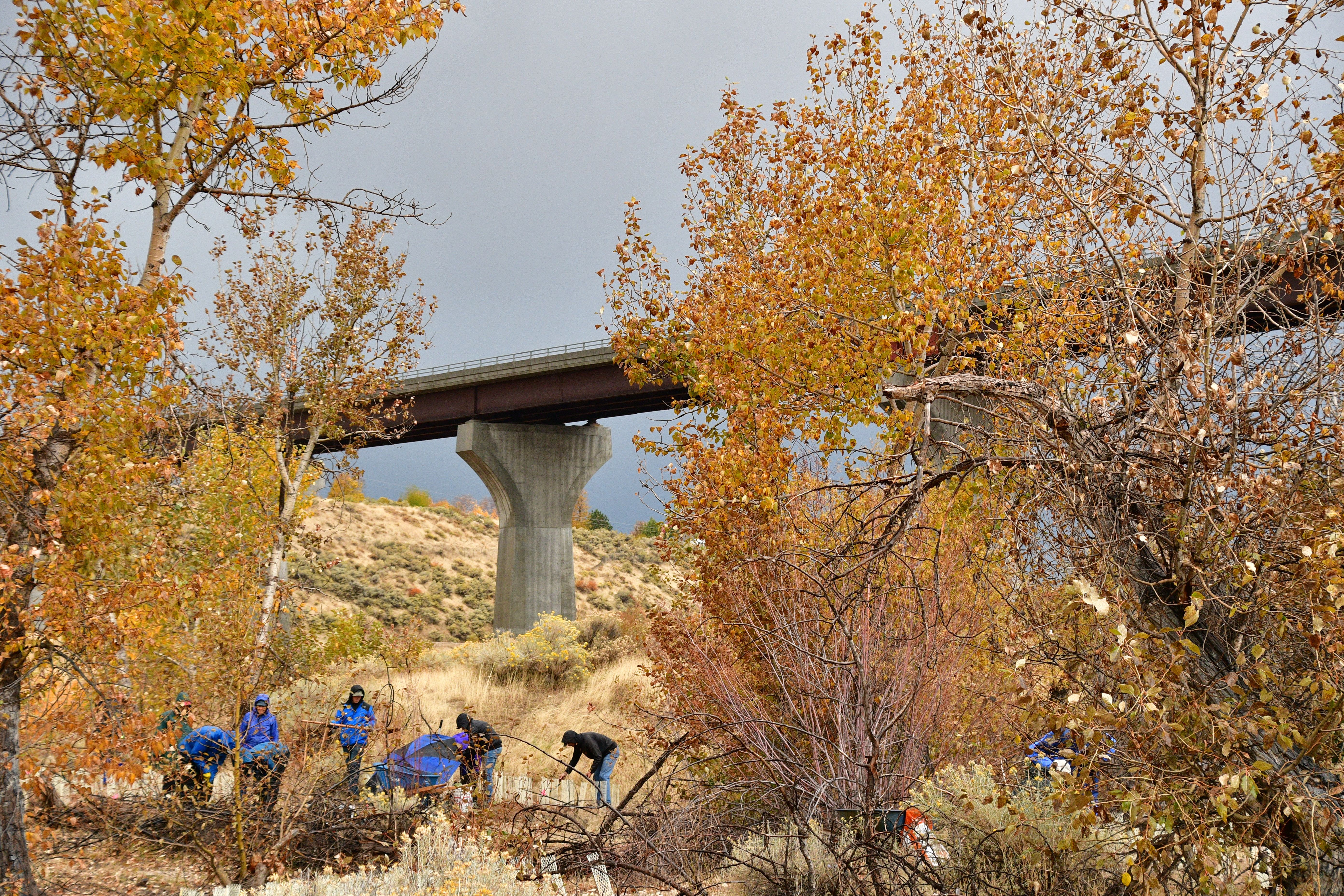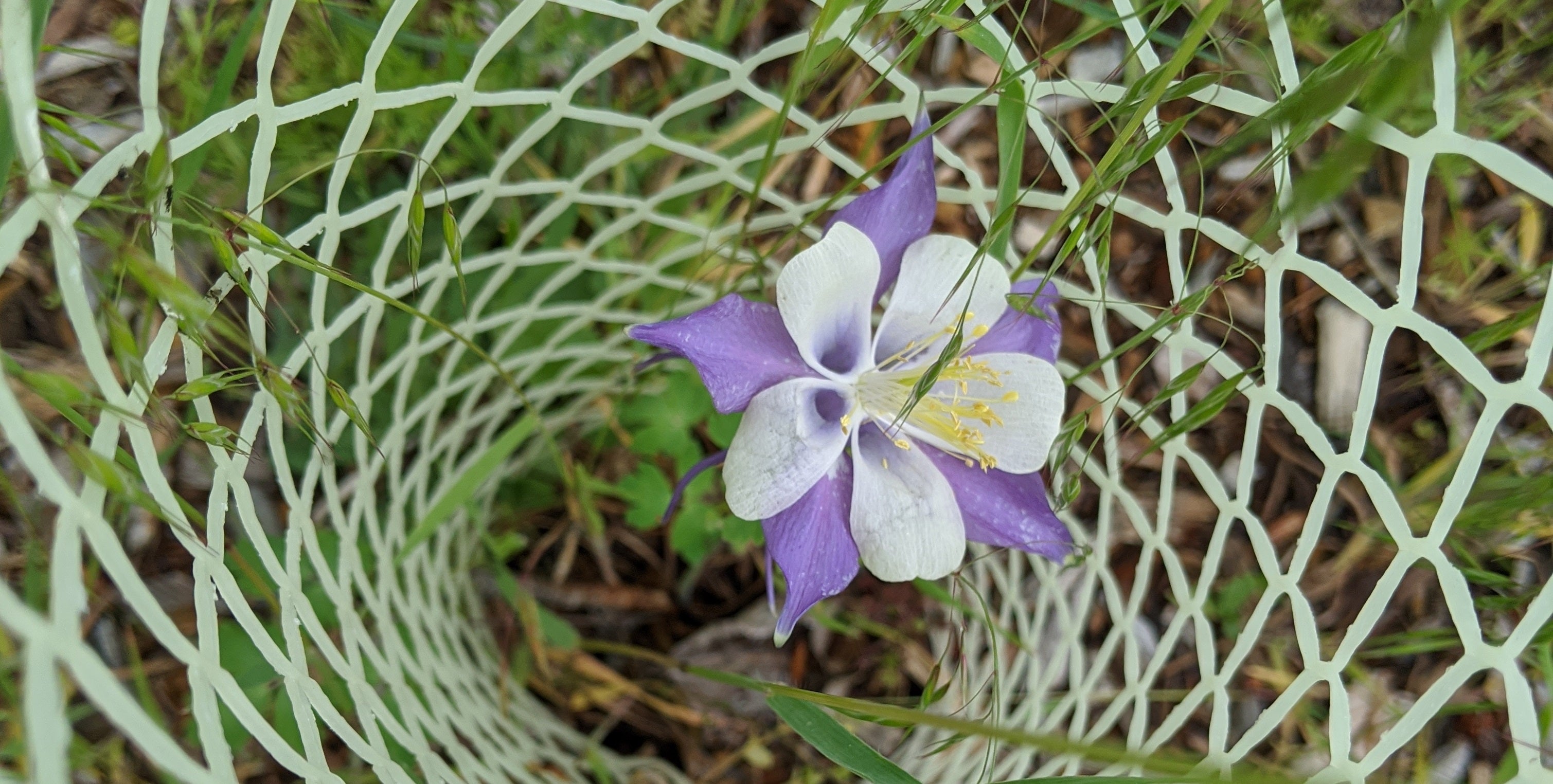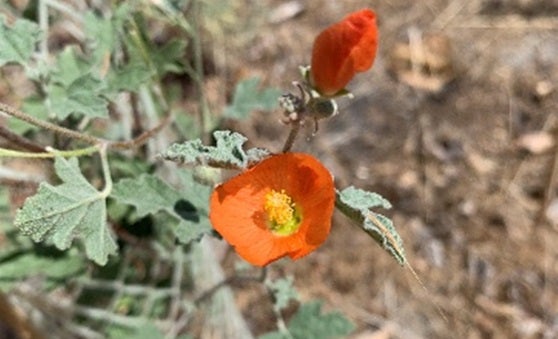Intermountain Bird Observatory 2020 Adopt-a-plot Program

Intermountain Bird Observatory (IBO) and a group of community partners are currently restoring a stretch of habitat along the Boise River at the IBO Research Station (recently named the Diane Moore Nature Center). The project is targeting songbirds and pollinators, but the benefits will be far reaching and will impact many species of mammals, birds, insects, and fishes.
The site is located southeast of Boise, ID under the Highway 21 bridge. It is owned by Boise State University and Idaho Department of Transportation. IBO has taken initiative in restoring the habitat and it is a huge undertaking. In 2018 and 2019, community volunteers helped establish over 3,500 native seedlings. Continued support from volunteers is crucial in their survival and to the success of these restoration efforts.
What is Adopt-a-plot?
This program is new for 2020 and invites citizen scientists to join IBO in providing crucial habitat for migrating pollinators and songbirds. With 75 experimental plots, care and maintenance has become a major need. We need help to control weeds so that our seedlings have the water and space they need to thrive. That’s where you come in! As a volunteer, you can take ownership of a small part of this restoration project and help us keep weeds under control.
? June 20th update ? Thanks to everyone who has signed up so far we have nearly all our plots spoken for! Please feel free to continue to sign up using the following linked form. We will notify you if more plots become available, or if other habitat restoration needs pop up this summer.
Interested in helping out? Sign up using our volunteer form to learn more!

Choose your workload
We need volunteers to “adopt” each of our 10 foot by 10 foot plots. You can adopt as few or as many plots as you like, keeping in mind that each one can take anywhere from 30 mins to 2 hours, depending on weed density. After the weeding is done, you can come back and see the progress of your adopted plots and the restoration overall, feeling a sense of pride in your contributions!
What do you need?
All you really need is a good pair of gloves. Each plot has 46 native seedlings protected by plant protection cages. The main goal is to carefully weed around the seedlings and straighten their protective cages. If you have some favorite gardening tools, they may come in handy for some heavily inundated plots.
As we get further into the summer, conditions at the site can be hot and dry. Proper clothing can make or break your time at the site. Long sleeve sun protection shirts, lightweight sun protection pants or shorts, a wide brim hat and sunscreen are must haves.
Bringing plenty of snacks, water, and any other items essential for your comfort are also recommended. If working by yourself, headphones and your favorite music, podcast, or audiobook can make your time at the site fly by.
On your first visit to the site, IBO will provide trash bags for disposing of all weeds and trash collected in and around plots. Having an extra may not hurt.

Learn plant identification
As part of the process, volunteers will learn basic plant identification with IBO staff. There are many invasive weeds and grasses that need to go, and many native seedlings that need to stay. This can be tricky but is a useful and important skill for any citizen scientist and any habitat restoration effort.
Get the family involved
Volunteering is a unique opportunity to get the family outside for a few hours a week. Doing something meaningful together is a great way to strengthen relationships with your loved ones and the environment.
Things to watch out for
There are many areas of the site that have thick patches of poison ivy. Luckily, it is easy to identify and once you know what it looks like, most folks are hyper aware of where it can be found.
Cheatgrass can be such a pain and the site is covered with it. Wearing shoes that are fully closed might be a good idea. You might like to try pair of rain boots or leather work boots that go up past your ankles. On the other side of that coin, others have had good luck with a pair of Chaco style sandals that have the added benefit of keeping your feet cool.
Fiddleneck is another nasty noxious weed found throughout the site. It has some very fine needle like structures that can make your skin very irritated. Heavy gloves are a necessity if you are planning to remove it from a plot, but volunteers can leave it for staff to remove if they would prefer.